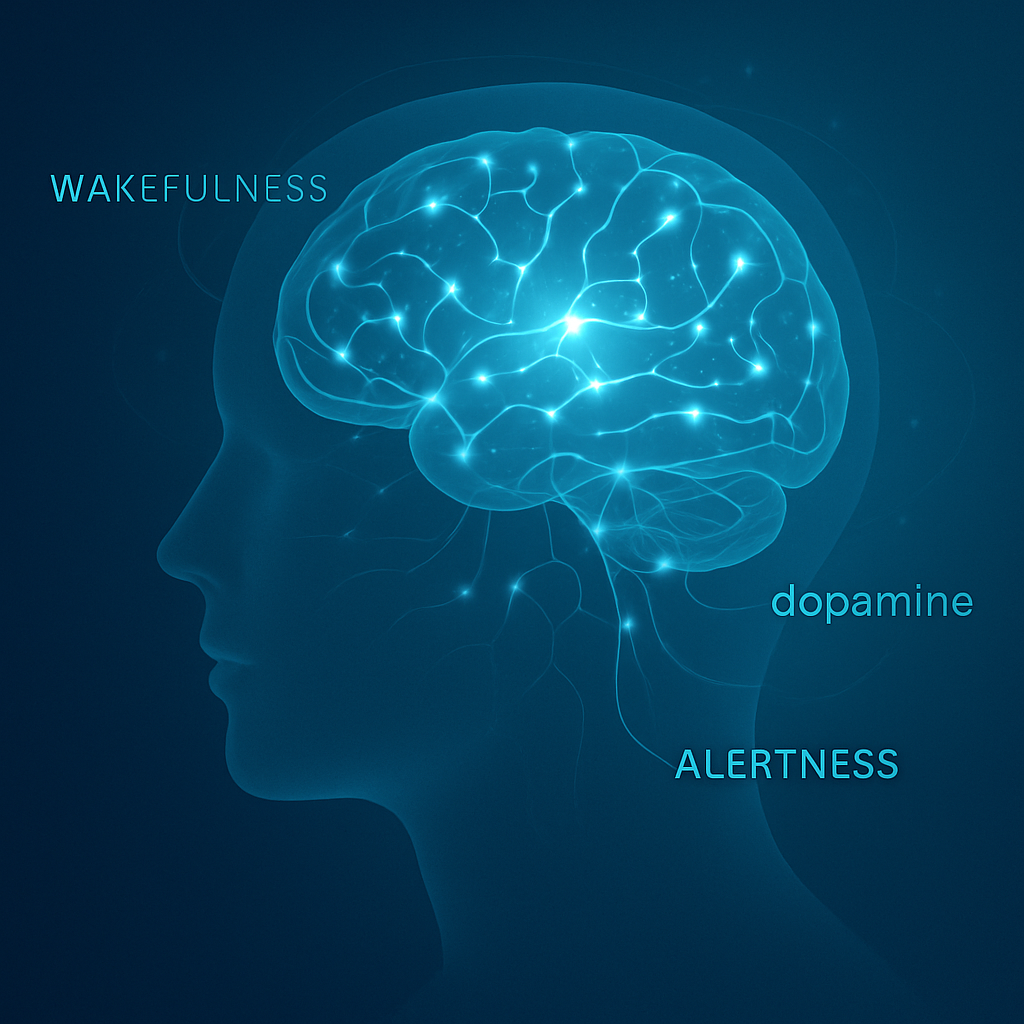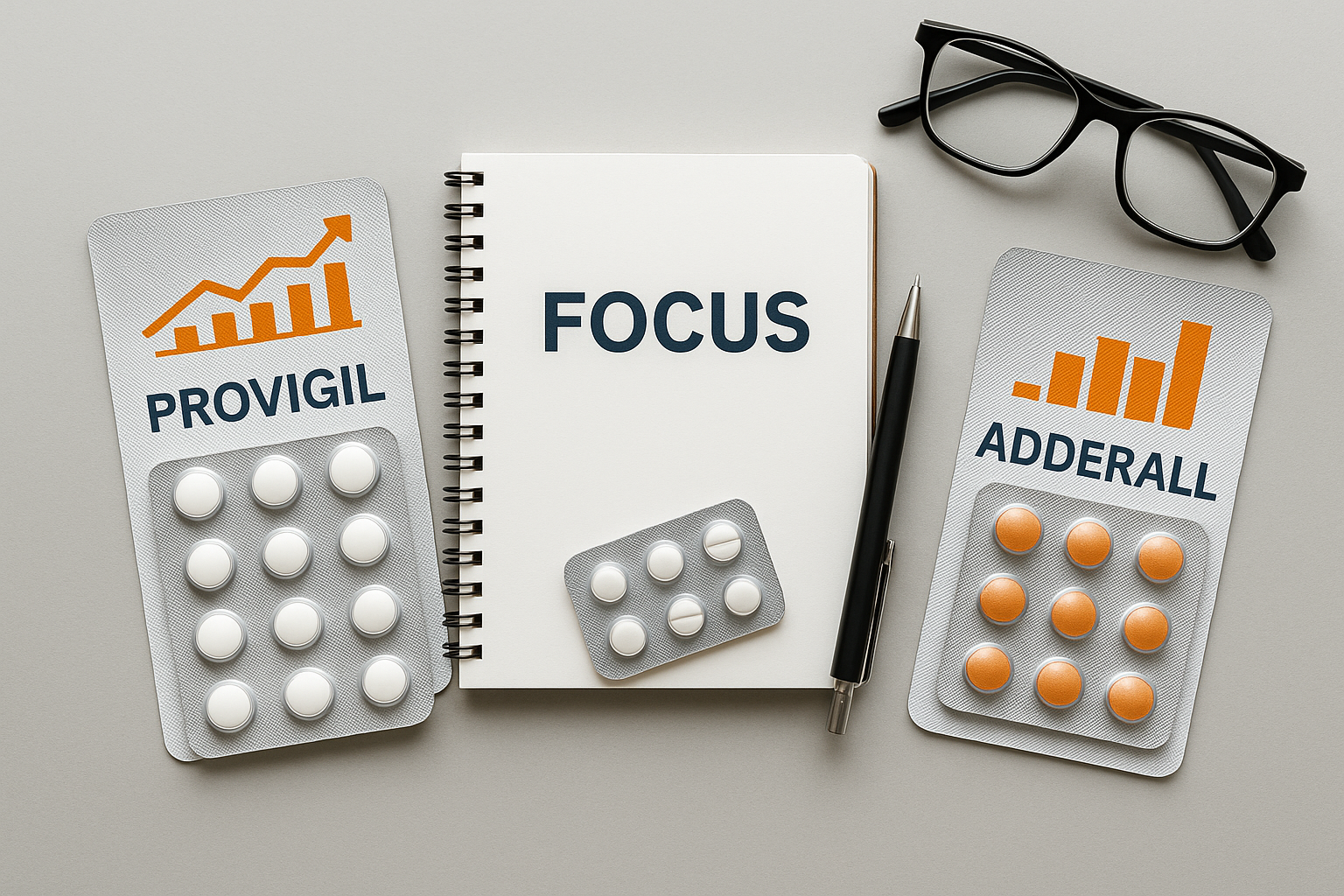Provigil (modafinil) is often seen as a “clean” brain booster — a smart drug that keeps you awake and focused without the chaos of traditional stimulants. It’s prescribed for narcolepsy, shift work sleep disorder, and even off-label for fatigue in medical conditions like MS or depression.
But behind the benefits, there’s one question that deserves a closer look:
Is Provigil dangerous?
💊 The Basics: What Provigil Actually Does
Modafinil works by increasing activity in brain regions responsible for alertness, attention, and motivation. It lightly influences several neurotransmitters — including dopamine, norepinephrine, and orexin — without the intense “rush” seen in amphetamines.
It’s often described as smooth, focused energy. Not jittery. Not wired. Just… awake.
✅ What Makes Provigil Less Dangerous Than Stimulants
- Low addiction risk (Schedule IV drug)
- No intense euphoria or “high”
- Mild side effects in most people
- No crash or withdrawal like Adderall or caffeine
⚠️ When Provigil Can Be Dangerous
1. In People with Heart Conditions
Provigil can slightly increase heart rate and blood pressure. For someone with arrhythmias or a history of heart disease, this could be risky.
2. If Taken Without Sleep
Trying to “cheat sleep” with Provigil may feel productive, but sleep deprivation is still harmful — even if you feel alert.
3. Skin Reactions (Rare but Serious)
Rare cases of Stevens-Johnson Syndrome have been linked to modafinil. Any rash should be treated as a red flag.
4. Unmonitored Long-Term Use
Self-prescribing or using Provigil long term without medical guidance could hide deeper issues or create dependence.
😰 Other Reported Side Effects
- Headache
- Nausea
- Insomnia
- Anxiety or irritability
- Dizziness
🧠 Is It Dangerous Long-Term?
There’s limited research beyond a few months, but real-world users report long-term safety when used responsibly. Still, regular checkups are smart — especially to monitor blood pressure and liver health.
🧾 Final Thought
Is Provigil dangerous?
Not for most — if you’re using it under medical supervision, at the right dose, and for the right reasons. The real danger lies in misuse, overuse, or ignoring symptoms.
Used carefully, Provigil can be a valuable tool — not a risk.
Provigil (modafinil) is often seen as a “clean” brain booster — a smart drug that keeps you awake and focused without the chaos of traditional stimulants. It’s prescribed for narcolepsy, shift work sleep disorder, and even off-label for fatigue in medical conditions like MS or depression.
But behind the benefits, there’s one question that deserves a closer look:
Is Provigil dangerous?
💊 The Basics: What Provigil Actually Does
Modafinil works by increasing activity in brain regions responsible for alertness, attention, and motivation. It lightly influences several neurotransmitters — including dopamine, norepinephrine, and orexin — without the intense “rush” seen in amphetamines.
It’s often described as smooth, focused energy. Not jittery. Not wired. Just… awake.
✅ What Makes Provigil Less Dangerous Than Stimulants
- Low addiction risk (Schedule IV drug)
- No intense euphoria or “high”
- Mild side effects in most people
- No crash or withdrawal like Adderall or caffeine
⚠️ When Provigil Can Be Dangerous
1. In People with Heart Conditions
Provigil can slightly increase heart rate and blood pressure. For someone with arrhythmias or a history of heart disease, this could be risky.
2. If Taken Without Sleep
Trying to “cheat sleep” with Provigil may feel productive, but sleep deprivation is still harmful — even if you feel alert.
3. Skin Reactions (Rare but Serious)
Rare cases of Stevens-Johnson Syndrome have been linked to modafinil. Any rash should be treated as a red flag.
4. Unmonitored Long-Term Use
Self-prescribing or using Provigil long term without medical guidance could hide deeper issues or create dependence.
😰 Other Reported Side Effects
- Headache
- Nausea
- Insomnia
- Anxiety or irritability
- Dizziness
🧠 Is It Dangerous Long-Term?
There’s limited research beyond a few months, but real-world users report long-term safety when used responsibly. Still, regular checkups are smart — especially to monitor blood pressure and liver health.
🧾 Final Thought
Is Provigil dangerous?
Not for most — if you’re using it under medical supervision, at the right dose, and for the right reasons. The real danger lies in misuse, overuse, or ignoring symptoms.
Used carefully, Provigil can be a valuable tool — not a risk.






